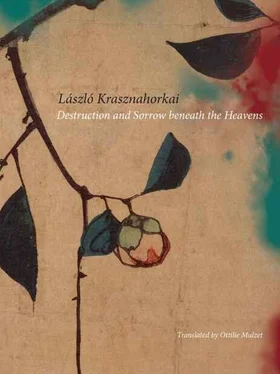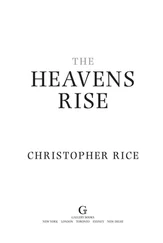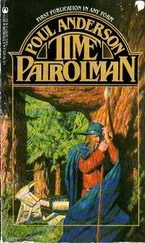[128] Laozi : The legendary ancient philosopher and the most important representative of Taoism; the philosophical verses attributed to him are known under the titles Laozi as well as Daodejing (‘The Book of the Path and Virtue’).
[129] Tripitaka (‘The Three Baskets’): The collection of Buddhist scriptures.
[130] Ananda: The cousin and disciple of the Buddha who accompanied him for more than 30 years, and thus was witness to most of his teachings. After the Buddha’s death, Ananda took part in the First Council and played an important role in deciding what should be considered as the teachings of the Buddha.
[131] buddha: In Mahayana Buddhism, an individual who has attained perfect enlightenment and gained liberation from the cycle of being. There are many buddhas, one of them being the historical Buddha.
[132] Agama Sutras: A collection from the Sanskrit Buddhist canonical scriptures, consisting of four parts.
[133] Mahaprajnaparamita Sutra (Da Zhidu Jing; also known as ‘The Great Treatise on the Perfection of Wisdom’): A fundamental Mahayana text which expresses the ultimate emptiness of all things.
[134] A Yu Wang Si (‘The Temple of Prince A Yu’): A temple near Ningbo dedicated to the memory of A Yu or King Ashoka, the Indian ruler who was responsible for the spread Buddhism in the third century bce.
[135] Tiantong Chan Si (‘The Monastery of Heaven’s Child’): One of China’s largest Chan Buddhist monasteries near Ningbo, founded approximately 1,500 years ago.
[136] Taipei Mountain: A mountain 30 kilometres away from Ningbo.
[137] Jiajing: The period of the Ming dynasty, between 1522 and 1566.
[138] jinshi (‘presented scholar’): A title awarded upon passing the highest rank of the three civil service examinations, held once every three years.
[139] Qianlong: The emperor of the Qing dynastic family ( r .1735–99). During his reign, the Chinese Empire, then experiencing enormous prosperity and cultural efflorescence, gained most of its territory.
[140] liang: One ounce, the weight of silver used as a means of payment.
[141] Yuan dynasty: The period of Mongolian rule in China (1271–1368).
[142] Li Taibai (also known as Li Tai-po, 701–62): One of the greatest poets of the Tang era.
[143] Kangxi: An emperor of the Qing dynastic family ( r .1661–1722), his long reign was characterized by the consolidation of the Manchurian dynasty, economic stabilization and territorial expansion.
[144] Li Shimin (598–649): Under the name of Taizong ( r .626–49), he was the second emperor of the Tang dynasty.
[145] Mingzhou pavilion: The building in the Grove of Steles (Beilin) which contains the collection of 173 inscribed stone tablets in the Tianyi Ge in Ningbo.
[146] the room of Qian Jin: A clerk who lived in the early days of the republic and donated several thousand inscribed bricks from the Jin Dynasty to the Tianyi-Ge. Hence the collection’s name: One Thousand (Qian) Jin.
[147] Jin dynasty (265–420): A period of Chinese history characterized by weak central power, invasions by nomadic groups and internal division.
[148] Bai E pavilion: A stone structure from the Ming era. Originally it stood by a grave in the Zuguan Mountains but in 1959 it was moved to the Tianyi Ge in Ningbo.
[149] The Temple of the Ancients of the Qing Family: Constructed between 1923 and 1925, it was used for offerings.
[150] Zhuangyuan pavilion (‘Principal Graduate’ pavilion): One of the buildings in Tianyi Ge in Ningbo which houses the picture and calligraphy collections.
[151] Yuehu (‘Moon Lake’): A picturesque lake in the centre of Ningbo. In times past, the famous poet-official He Zhizhang sought seclusion here.
[152] Putuoshan: A small ocean island near Ningbo, it is one of the four most significant Buddhist places of pilgrimage and the centre of the cult of Guanyin. At one time it was home to 300 temples.
[153] Jinsha (‘Golden Sands’), Baibusha (‘Sands of One Hundred Steps’), Qianbusha (‘Sands of One Thousand Steps’): Sections of beach on the southern shore of the Putuoshan.
[154] Puji Chan Si (‘Temple of Universal Salvation’): Founded in 1080, the largest temple in Putuoshan, once home to a thousand monks.
[155] Fayu Chan Si (‘The Temple of the Rain of Dharma’): A temple on Putuoshan, founded in 1590. In one of its halls is a throne room, built for the Ming rulers and brought here by a Qing emperor.
[156] Huiji Chan Si (‘The Temple of Wise Help’): The third-largest temple on Putuoshan in whose interior is a renowned stone pagoda. Traditionally, pilgrims perform prostrations every three steps on road leading up to the temple.
[157] Yan Liben (600–73): A Tang-era court official and painter. His (now lost) painting of Guanyin formed the basis for a stone carving in 1608 and which can be seen even today.
[158] Fudan University: The most renowned university in China.
[159] Nanjing Lu: The most famous shopping street in Shanghai.
[160] lotus: In Buddhism, a symbol of the Buddha, infinity and beatitude.
[161] Sun Yat-sen (1866–1925): Chinese Kuomintang statesman, and president of China from 1919 to 1925.
[162] Chiang Kai-shek (1887–1975): President of China from 1928 to 1931 and 1943 to 1949; president of Taiwan from 1950 till his death.
[163] xiao lingzi: A high-collared shirt.
[164] aozhou: A lined overcoat, frequently worn in north-eastern China.
[165] lian: A one-piece woman’s garment.
[166] ma jia: A kind of waistcoat worn by those of high rank during the Qing era. There were styles for both men and women.
[167] Wangfujing: The most famous shopping street in Beijing.
[168] Tiananmen (‘The Gate of Heavenly Peace’): A fortified gate in the centre of Beijing, as well as the square named after it. In imperial days, it served as the entrance to the palace.
[169] qipao: A traditional long, one-piece, high-collared garment for women.
[170] Wei: Hello.
[171] Shifan University: The Faculty of Education in the Beijing Normal University.
[172] Li Yi Lian Chi: Ceremoniousness, awareness of responsibility, honour and sense of shame— the four significant virtues of Confucianism which are important in education.
[173] zhuyin zimu: A system of transcription for Chinese used in the time of the republic, and later in Taiwan, which conveys the tones for each syllable.
[174] guoyu (‘national language’): The designation for Standard Chinese, used in the time of the Kuomintang and based upon a northern Chinese dialect.
[175] Kong Rong Rang Li (‘Kong Rong Lets Go of His Pear’): A story about Kong Rong, a descendent of Confucius in the time of the Han dynasty, according to which the four-year-old Kong took the smallest pear from a basket so that the older relatives could have the bigger ones.
[176] ‘well-known passage and sentence’: A reference to the Lunyu in the first section of which Confucius says: ‘When someone comes to a friend from a faraway land, should he not rejoice?’
[177] Guangji Si (‘The Temple of Universal Assistance’): A Buddhist temple in Beijing, the foundations of which date back to the thirteenth century. Currently the home of the Chinese Buddhist Association.
[178] Zhuozheng Yuan (‘The Garden of the Politics of the Common Man’; also known as ‘The Humble Administrator’s Garden’): The largest garden in Suzhou. Created in 1509, it represents the style of garden common in the Ming era. Its name is derived from a line by Pan Yue: ‘The creation of gardens, in order to serve one’s daily needs, is the politics of the common man.’
[179] Shizi Lin (‘Lion Garden’): A garden in Suzhou built in 1350 in the memory of a Buddhist master, embodying the style of gardens common during the Yuan era.
Читать дальше












